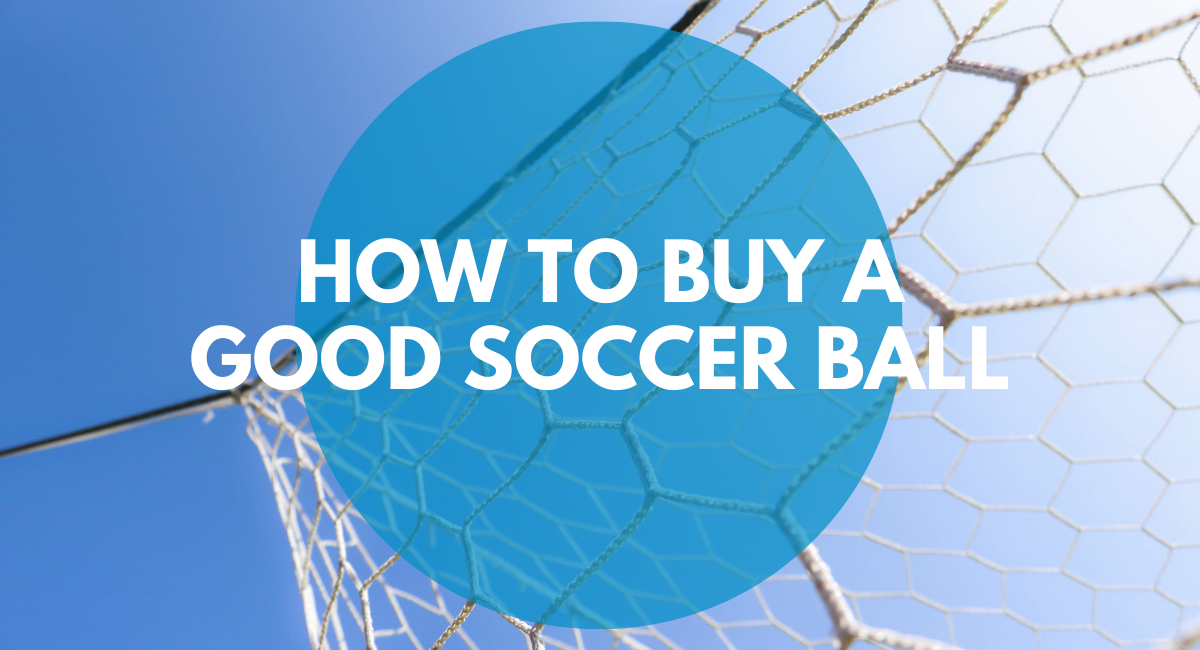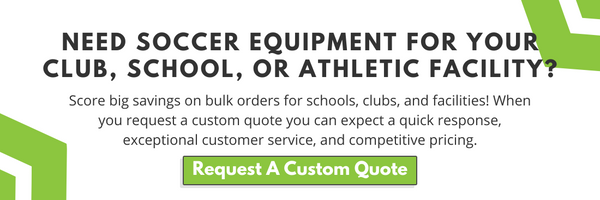When it comes to the beautiful game, there's one essential element you can't do without - a good soccer ball. So what makes a good soccer ball?
Soccer balls come in different sizes, brands, and textures. They're made with different types of technology, they bounce differently, require different care, some are meant for training and some for matches, and so on. The options are endless.
Even with all of the options out there, if you want to buy a good soccer ball you need to consider these three things:
How To Buy A Good Soccer Ball
1. Choose the right size for your soccer ball
Soccer balls range in size from 1 to 5. You can pick the right size soccer ball by knowing which age group will be playing with it. Here is a chart outlining each size, measurements, and general age group. You can click the rows below to view our selection of soccer balls in each size.
Soccer Balls
| Size | Circumference | Ages Used |
| 5 | 27 - 28 in | 12 and up |
| 4 | 25 - 26 in | 8 to 12 |
| 3 | 23 - 24 in | 8 and under |
| 1 | 18 - 20 in | Small children |
2. Select the right soccer ball features
To find a good soccer ball you want to consider the features on the inside and outside of the ball. The bladder and the cover construction features will impact how your ball performs:
The bladder is the inside of the ball, the core. There are two main types of bladders used in the construction of soccer balls:
- Latex: Gives the soccer ball a proper bounce, softer, often used in premium match balls, lose air faster.
- Butyl: Excellent for air retention, keep their shape longer.
The cover construction involves the outer layer material and whether or not the panels are hand-stitched.
The outer layer of each soccer ball is made using a synthetic leather of polyurethane (PU) or polyvinyl chloride (PVC). Soccer balls with PU covers are usually better quality. Some lower-end training balls are made using PVC.
Soccer balls of the highest quality, like those used in professional soccer and with elite soccer players, have their panels hand-stitched. Machine stitching is usually found on middle-quality balls. Low-end balls used for training, recreation, or promotion often have their panels glued or molded which creates a harder feel.
3. Be aware of soccer ball standards
The soccer ball you're purchasing might need to meet specifications or standards for use in a league or competition. Always check with your club, league, or competition to make sure your soccer ball meets specifications.
National Federation of High School Associations: Soccer balls used in American high school competitions must be NFHS approved.
Fédération Internationale de Football Association: Only the highest quality soccer balls are FIFA approved. There are three levels of FIFA approved soccer balls, Basic, Quality, and Quality Pro.
Soccer Command has a wide selection of soccer balls for players at every level. If you have any questions about finding a good soccer ball that fits your needs, get in touch with us. We can even give you a quote for competitive pricing when you purchase soccer balls in bulk.




